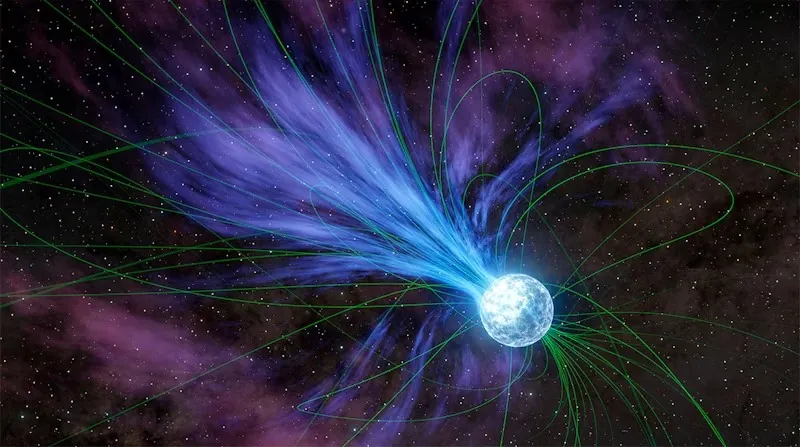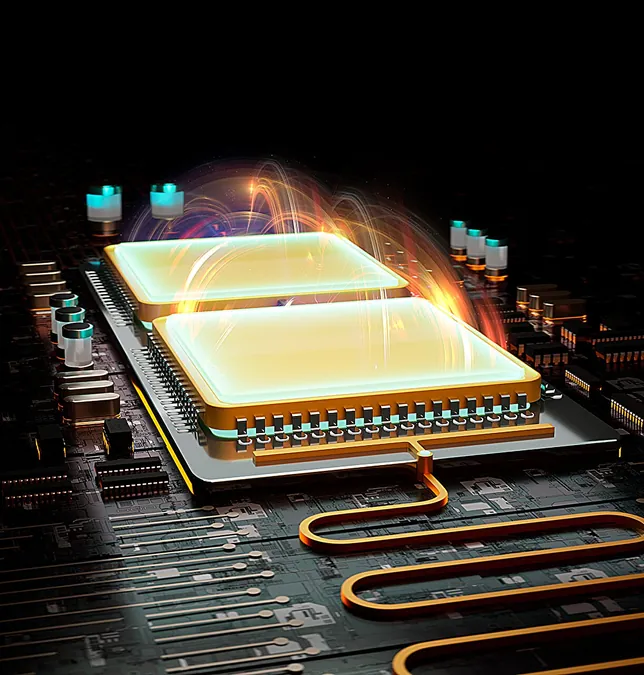
Unveiling the Cosmic Forge: How Magnetar Flares Create Gold and Platinum
2025-05-30
Author: Nur
A Stellar Revelation: The Birth of Precious Metals
Brace yourself for an astronomical revelation! Recent studies suggest that the dazzling gold, silver, and platinum we cherish may have origins in the explosive flares of magnetars—highly magnetic neutron stars. Incredible as it sounds, these celestial events could account for up to 10% of the universe's supply of these precious metals.
The R-Process: Cosmic Alchemy at Work
Gold and other heavy elements are classified as rapid-process (r-process) elements, stemming from intense neutron captures by lighter nuclei. Given that free neutrons exist outside atomic nuclei for merely 15 minutes before decaying, this process requires extremely rapid conditions enriched in neutrons.
A Cosmic Event: Kilonova Discoveries
In August 2017, a spectacular kilonova was observed following the dramatic merger of two neutron stars, producing a staggering 16,000 Earth-masses of r-process elements, including roughly ten Earth masses of gold and platinum. This event offered tantalizing clues about the genesis of these rare elements, yet some experts believe neutron-star mergers alone can’t fully explain their abundance across the cosmos.
Magnetars: The Stars with a Million Trillion Gauss
Enter the magnetar, a neutron star with unimaginably intense magnetic fields, equivalent to a thousand trillion gauss. If one were positioned as close to Earth as the Moon, its magnetic pull could wipe data from your credit cards! This immense magentism creates conditions ripe for intense stellar flares, hypothesized to eject neutron-rich material that undergoes the r-process.
The Mystery Behind Magnetar Flares
Despite understanding that magnetars’ magnetic fields fuel their gigantic flares, the mechanics behind the energy release remain elusive. Researchers speculate that these might arise from magnetic reconnection or starquakes triggered by the build-up and release of magnetic stress.
A Record-Breaking Gamma-Ray Burst
Astrophysicists believe they witnessed a monumental event in 2004 when a magnetar flare emitted a half-second gamma-ray burst with energy exceeding that of the Sun over a million years. Subsequent signals detected by the European Space Agency's INTEGRAL satellite hinted at the creation of heavy elements within the initial explosion, as unstable isotopes decayed into stable forms.
Staggering Implications for R-Process Contributions
Researcher Anirudh Patel estimates that this single flare produced an astonishing two million billion billion kilograms of r-process elements, analogous to the mass of Mars! He posits that these giant flares could contribute significantly—between 1-10%—to all r-process elements in the universe.
The Lifespan and Legacy of Magnetars
While magnetars are rare, with lifespans of 1,000 to 10,000 years, their historical impact is profound. Magnetars likely emerged from ancient supernovae soon after the big bang, predating the mergers of neutron stars by billions of years. This suggests that they may have been early cosmic manufacturers of r-process elements.
Beyond Magnetars: Other Cosmic Sources?
However, Patel theorizes that magnetars aren't the sole contributors; certain types of core-collapse supernovae may also create r-process elements. So, the next time you admire gold or platinum, remember—some of it may have been born in the tumult of fierce magnetic forces on a distant star!


 Brasil (PT)
Brasil (PT)
 Canada (EN)
Canada (EN)
 Chile (ES)
Chile (ES)
 Česko (CS)
Česko (CS)
 대한민국 (KO)
대한민국 (KO)
 España (ES)
España (ES)
 France (FR)
France (FR)
 Hong Kong (EN)
Hong Kong (EN)
 Italia (IT)
Italia (IT)
 日本 (JA)
日本 (JA)
 Magyarország (HU)
Magyarország (HU)
 Norge (NO)
Norge (NO)
 Polska (PL)
Polska (PL)
 Schweiz (DE)
Schweiz (DE)
 Singapore (EN)
Singapore (EN)
 Sverige (SV)
Sverige (SV)
 Suomi (FI)
Suomi (FI)
 Türkiye (TR)
Türkiye (TR)
 الإمارات العربية المتحدة (AR)
الإمارات العربية المتحدة (AR)